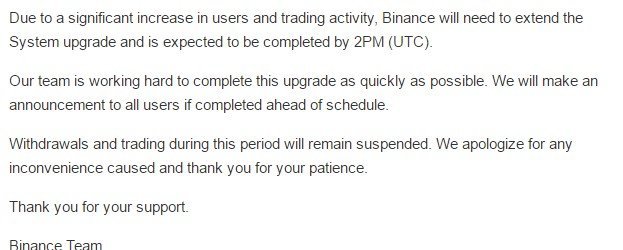In a large open economy, the money available for lending doesn’t appear out of nowhere. It comes from a mix of sources, including savings from people and companies, government actions, and money flowing in from other countries. Understanding where these loanable funds originate is key to seeing how interest rates are set and how an economy grows. This supply fuels everything from business expansions to home mortgages.
The Primary Source: Domestic Savings
The biggest and most important source of loanable funds in any economy is domestic savings. This is the money that households and businesses within the country choose to save rather than spend.
When you put money into a savings account, you are contributing to this supply. Businesses do the same when they hold onto their profits instead of paying them all out to shareholders. These individual pools of money might seem small, but when added together, they form a massive source of capital for the entire nation.
Financial institutions, like banks and credit unions, play a crucial role by gathering these savings from millions of individuals and businesses. They then make these collected funds available to borrowers who need capital for investment and consumption. Without this fundamental base of domestic savings, the financial system would have very little money to lend out.
Foreign Investment and Capital Inflows
In an open economy, money can flow across borders. This means that foreign investment is another significant source of loanable funds. When investors from other countries decide to buy assets in your country—like stocks, bonds, or real estate—they bring their capital with them.
This inflow of foreign money directly increases the total amount of funds available for lending. This can be especially helpful for countries that do not have a high domestic savings rate. Foreign capital can help finance new factories, technology, and infrastructure projects, boosting economic growth.
The amount of foreign investment a country attracts often depends on its economic stability and interest rates. A country with higher interest rates and a strong economy is often more attractive to foreign investors, leading to a larger supply of loanable funds.
The Role of Government in the Loanable Funds Market
The government can be either a supplier or a user of loanable funds, which directly impacts the overall supply. Its actions, particularly through its budget, play a critical role.
When the government runs a budget surplus, it means it has collected more in taxes than it has spent. This extra money can be saved, and the government can lend it out by purchasing bonds. In this case, the government adds to the national supply of loanable funds, helping to push interest rates down.
Conversely, when a government runs a budget deficit, it must borrow money to cover its spending. It does this by selling bonds, effectively competing with private businesses and individuals for the available loanable funds. This action reduces the supply available for everyone else and can lead to higher interest rates, a phenomenon known as “crowding out.”
| Government Budget Status | Action | Effect on Supply of Loanable Funds |
|---|---|---|
| Budget Surplus (Revenue > Spending) | Lends money (buys bonds) | Increases Supply |
| Budget Deficit (Spending > Revenue) | Borrows money (sells bonds) | Decreases Supply |
How Interest Rates Guide the Supply
Interest rates are essentially the price of borrowing money. They play a vital role in influencing the decisions of both savers and borrowers and are a key determinant of the supply of loanable funds.
For savers, a higher interest rate is an incentive to save more. When you can earn more on your savings, you are more likely to put money aside instead of spending it today. This direct relationship means that as interest rates rise, the quantity of loanable funds supplied also tends to rise.
Central banks, like the Federal Reserve in the United States, influence these rates through monetary policy. By adjusting their benchmark interest rate, they can encourage or discourage saving, which in turn affects the total pool of loanable funds available in the economy.
Financial Institutions: The Critical Intermediaries
While savings are the source, they wouldn’t be useful without a system to channel them to where they are needed. This is where financial institutions come in. Banks, credit unions, and other financial firms act as intermediaries between savers and borrowers.
They make the market for loanable funds efficient and accessible. Without them, a person wanting to build a new factory would have to find hundreds of individual savers willing to lend them money directly, which would be incredibly difficult. Financial institutions solve this problem by pooling savings and managing the lending process.
These institutions perform several key functions:
- They collect deposits from savers, providing them with a safe place to store their money.
- They assess the creditworthiness of potential borrowers to manage risk.
- They create liquidity by making funds readily available for loans of various sizes and terms.
By performing these roles, banks and credit unions ensure that the savings of households and firms are effectively transformed into productive investments.
Challenges to the Domestic Supply of Funds
The supply of loanable funds is not always stable. It can be affected by various challenges, especially in a globally connected economy. Economic shocks, such as a recession or a financial crisis, can cause people and businesses to save less and banks to lend less, shrinking the available supply.
Furthermore, shifts in global investor confidence can cause rapid inflows or outflows of foreign capital. If foreign investors suddenly pull their money out of a country, its supply of loanable funds can decrease dramatically, leading to higher interest rates and reduced investment.
Exchange rate fluctuations also play a part. A weakening domestic currency can make a country’s assets less attractive to foreign investors, potentially reducing the inflow of capital and tightening the domestic supply of funds.
Frequently Asked Questions about the Supply of Loanable Funds
What is the single most important source of loanable funds in an economy?
The primary and most crucial source is domestic savings from households and businesses. This forms the foundational pool of capital that is then lent out for investment and consumption.
How does a government budget deficit affect the supply of loanable funds?
A government budget deficit reduces the supply of loanable funds available for private investment. The government must borrow from the same pool of savings, which can lead to higher interest rates for everyone else.
Why do foreign investors put their money in another country?
Foreign investors are typically seeking higher returns or more stable investment opportunities. A country with strong economic growth, political stability, and attractive interest rates will often draw in more foreign capital.
What is the “crowding out” effect?
Crowding out occurs when increased government borrowing drives up interest rates. These higher rates make it more expensive for private businesses and individuals to borrow, thus reducing private investment in the economy.
Can the supply of loanable funds ever run out?
While the supply can shrink significantly during a crisis, it doesn’t “run out.” The supply is determined by the willingness of savers to lend at a given interest rate. If rates rise high enough, it will always encourage more savings.







Leave a Comment